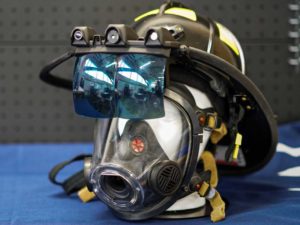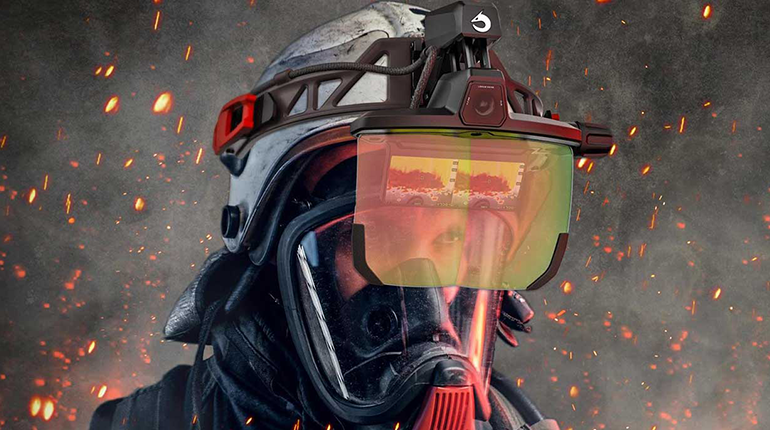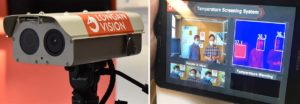Startup’s Thermal Imaging and AR System for Firefighters Joins the COVID-19 Fight
THE INSTITUTE Before the coronavirus pandemic hit Canada, Enzo Jia was busy developing the Fusion Vision System, an augmented reality (AR) visor with thermal imaging to help firefighters see through smoke.
“I always wanted to design something to help humans enhance their vision and also to see something they cannot with the naked eye,” Jia told The Institute in March. He is chief executive of Longan Vision, a startup he helped found. “I really want to help firefighters and first responders enhance their vision by using AR technologies.”
The startup, based in Hamilton, Ont., was named a 2020 IEEE Entrepreneurship Star at this year’s Consumer Electronics Show, held in January. The program recognizes early-stage companies that have the potential of bringing to market engineering-driven innovations in IEEE’s field of interest. Along with the recognition, awardees get a free year of IEEE membership.
In the months before the pandemic, the company had developed a prototype of its Fusion Vision System and had demonstrated it to several fire departments.
When COVID-19 began spreading throughout Canada, Jia and his colleagues realized they could use some of the same technologies to combat the spread of the virus, so they began a side project. To detect a high body temperature, which is a common symptom of COVID-19, the startup used components from the visor to build Gatekeeper, a thermal-imaging system. Gatekeeper can be mounted on a wall or tripod to measure the body temperature of up to five people at once.
Several units have been installed in long-term-care facilities, grocery stores, and universities, Jia says.
AR VISORS
Jia, a mechanical engineer, says he has been a fan of AR technology for some time. His undergraduate capstone project at McMaster University, in Hamilton, was about how AR could be used in vehicle head-up displays. Such displays, which already exist in some vehicles, can project information on the windshield, including navigation instructions, speed limit, and mileage.
Jia, who earned a bachelor’s degree in automotive engineering technology, was a member of the university’s IEEE student branch. He later earned a master’s degree in mechanical engineering from the school.
 He launched Longan in 2018 with five colleagues shortly after graduating. At first, the job wasn’t full time. To get business experience under his belt as well as an understanding of how to manufacture products, he worked as a mechanical engineer for material-handling-equipment company Skyjack and automotive supplier Magna.
He launched Longan in 2018 with five colleagues shortly after graduating. At first, the job wasn’t full time. To get business experience under his belt as well as an understanding of how to manufacture products, he worked as a mechanical engineer for material-handling-equipment company Skyjack and automotive supplier Magna.
Today he works full time for Longan, which has five other full-time employees and two interns.
His initial idea was to develop AR glasses that integrated thermal imaging for industrial applications, such as Google Glass and Microsoft HoloLens. The company changed direction after several fires in Ontario caused major losses of life and property.
 “In some of these incidents, firefighters lost their lives saving people while the building was collapsing around them,” Jia says. “They needed to fight not only the fire but also [a lack of] time. Additionally, they needed to overcome obstacles, like lack of communication and terrible visibility. Their bravery inspired me.”
“In some of these incidents, firefighters lost their lives saving people while the building was collapsing around them,” Jia says. “They needed to fight not only the fire but also [a lack of] time. Additionally, they needed to overcome obstacles, like lack of communication and terrible visibility. Their bravery inspired me.”
Today’s firefighters use outdated technology, he says. He compares their equipment to cellphones of the past—which offered only basic features such as calling and texting. He wants to give first responders commercially available smart technologies to “jump-start them to the next generation of technology,” he says.
“We are developing a solution,” he says, “to try and address all three of these pain points: poor visibility, communication, and data.”
Go to IEEE The Institute to read the complete article.







